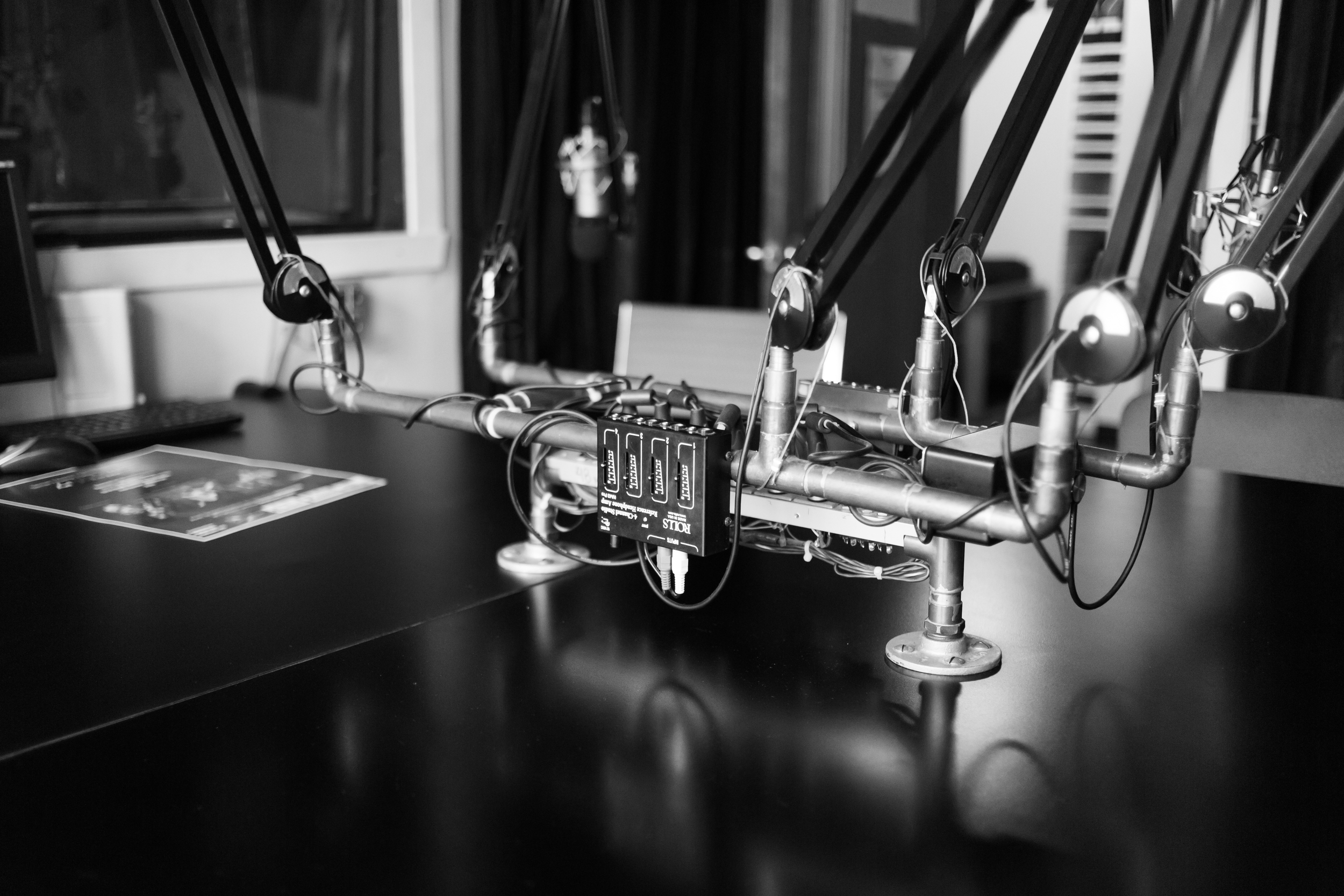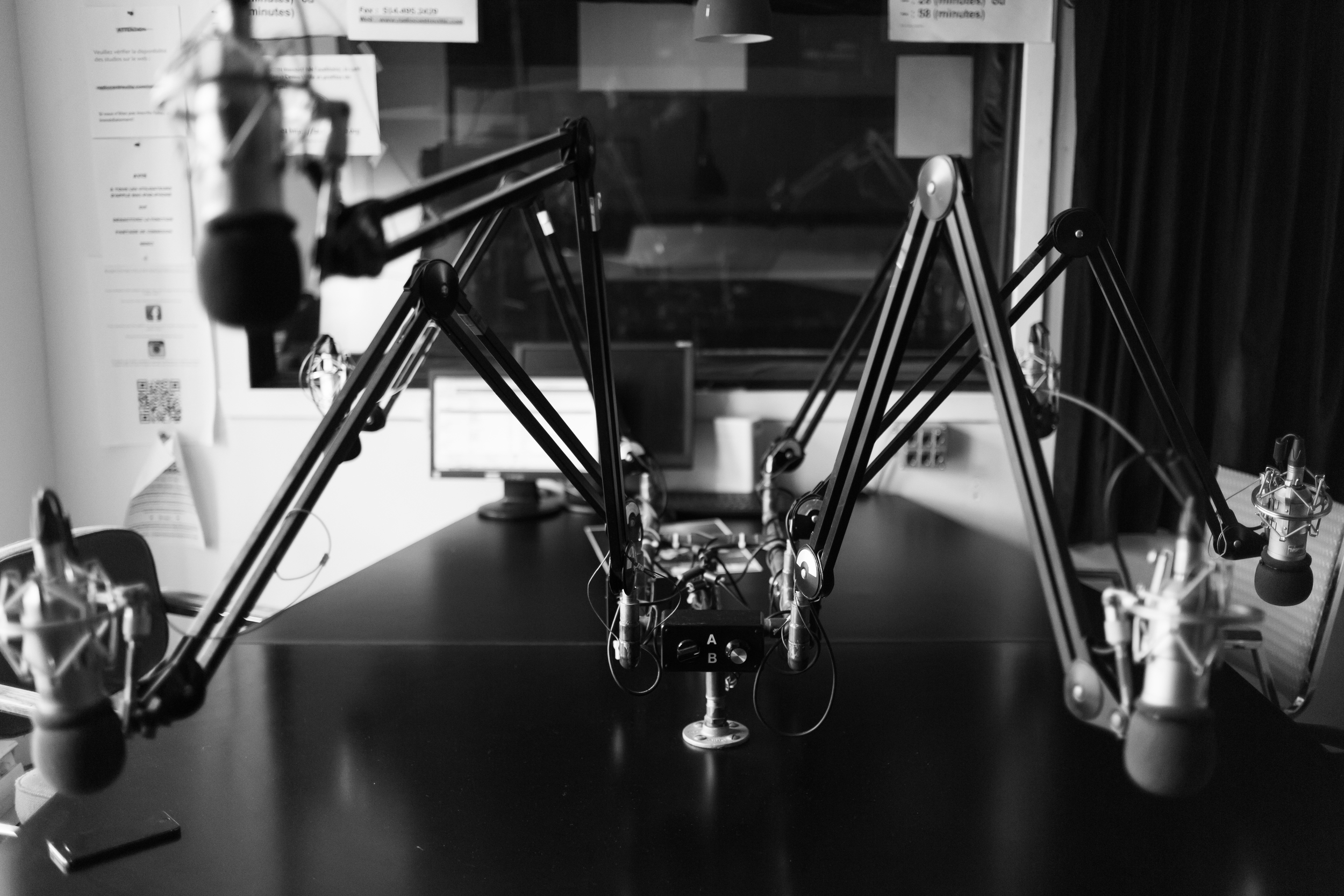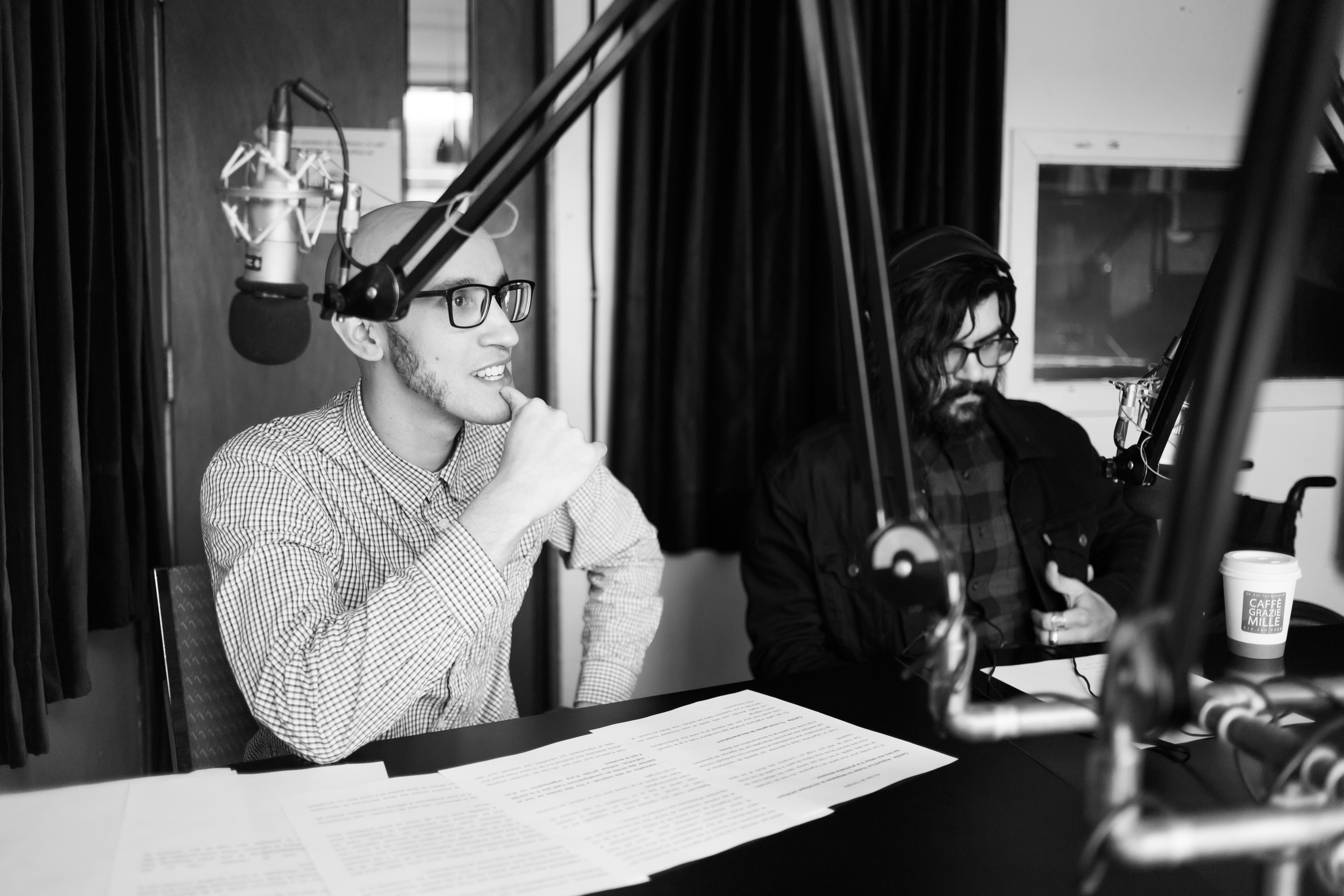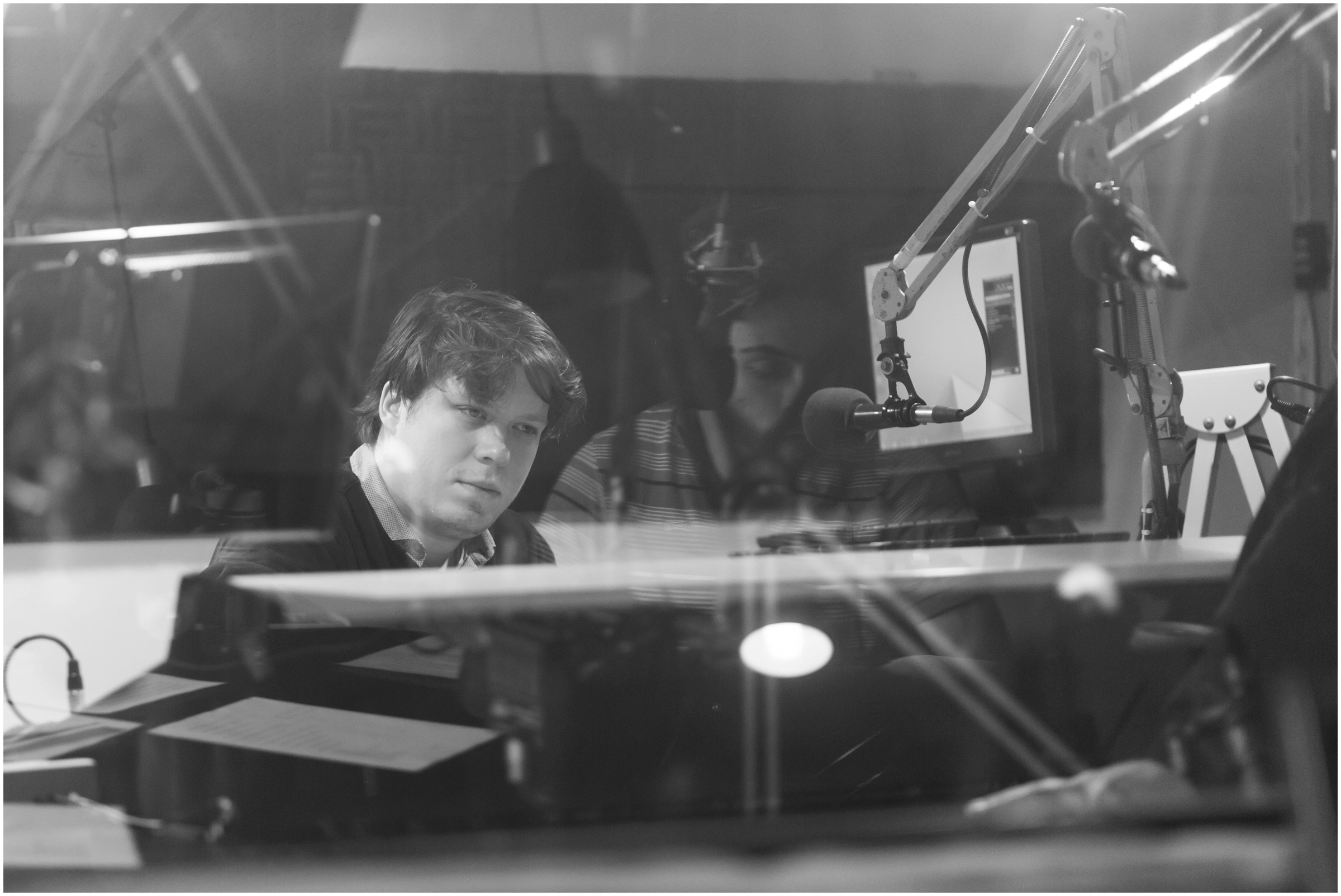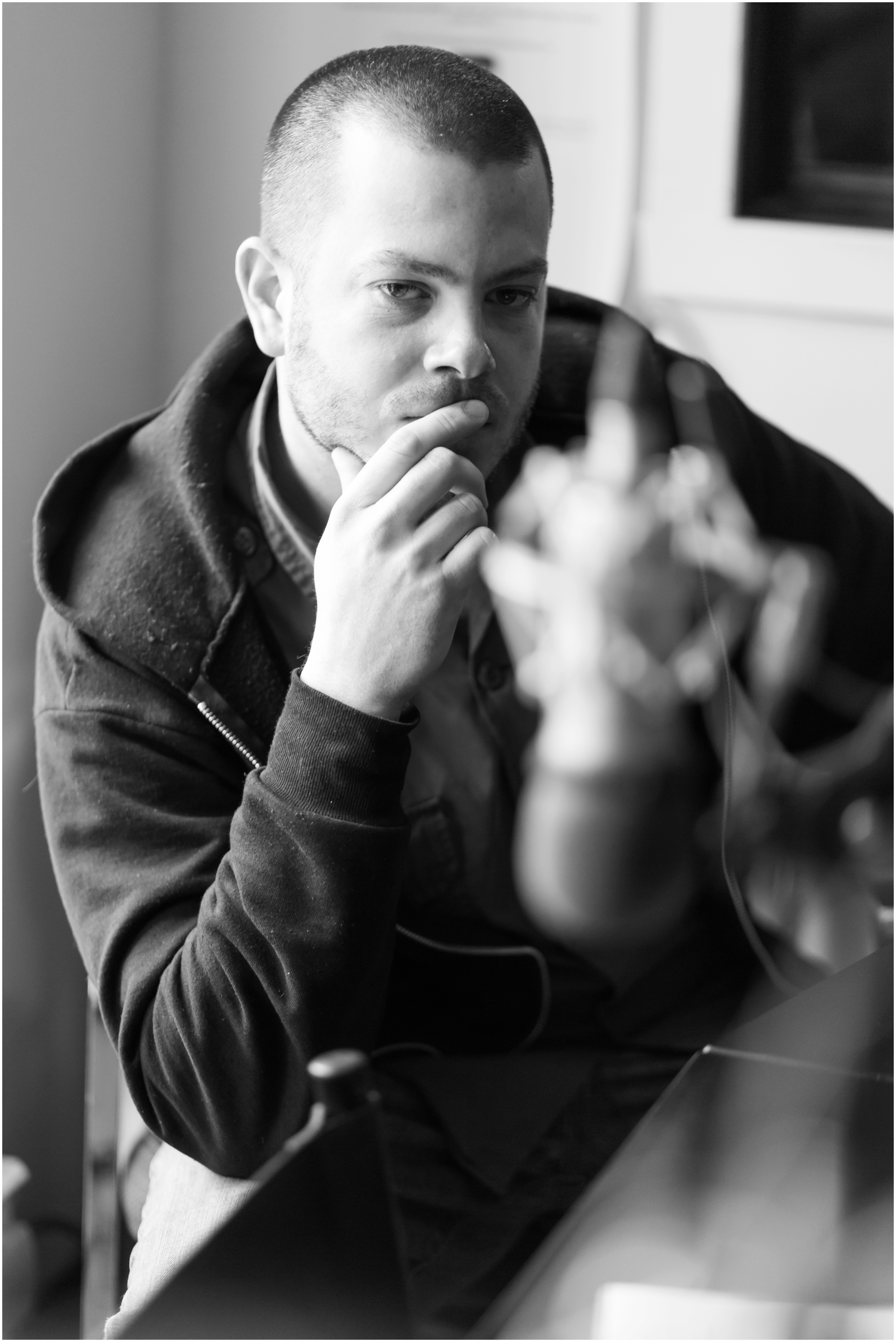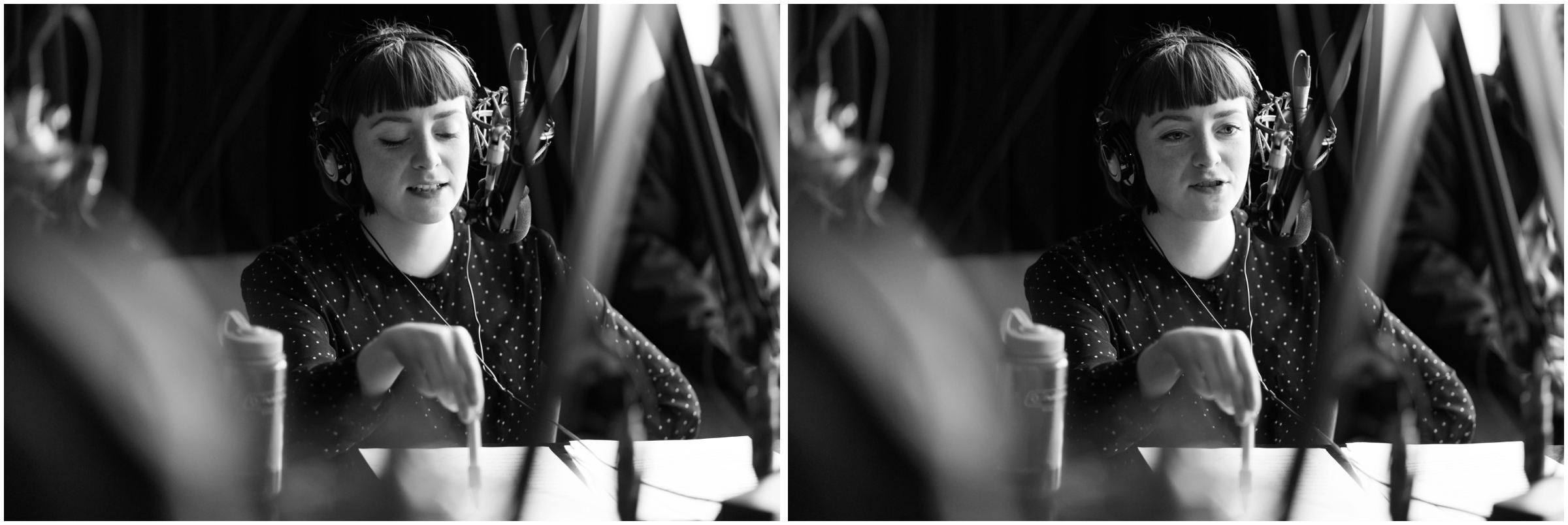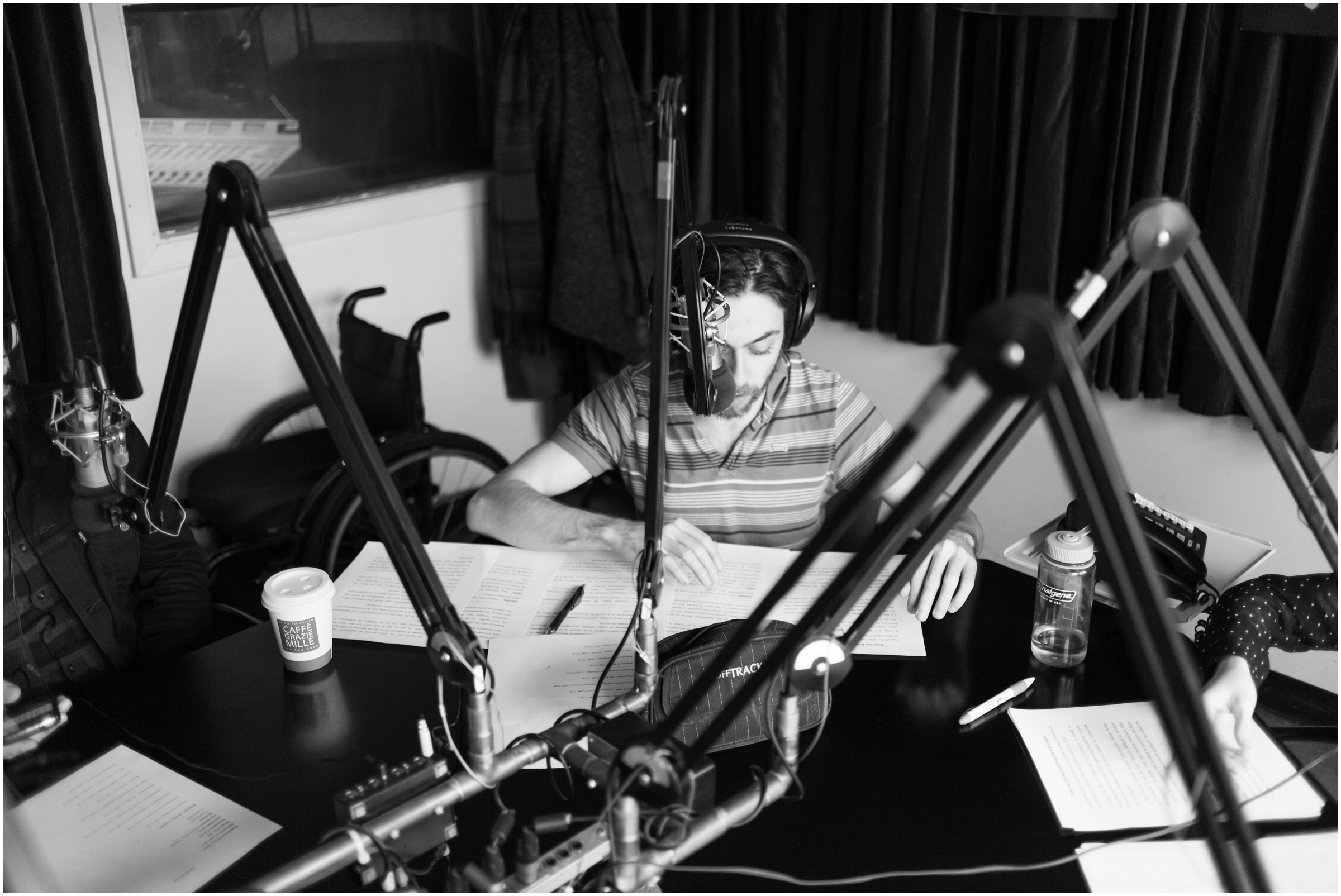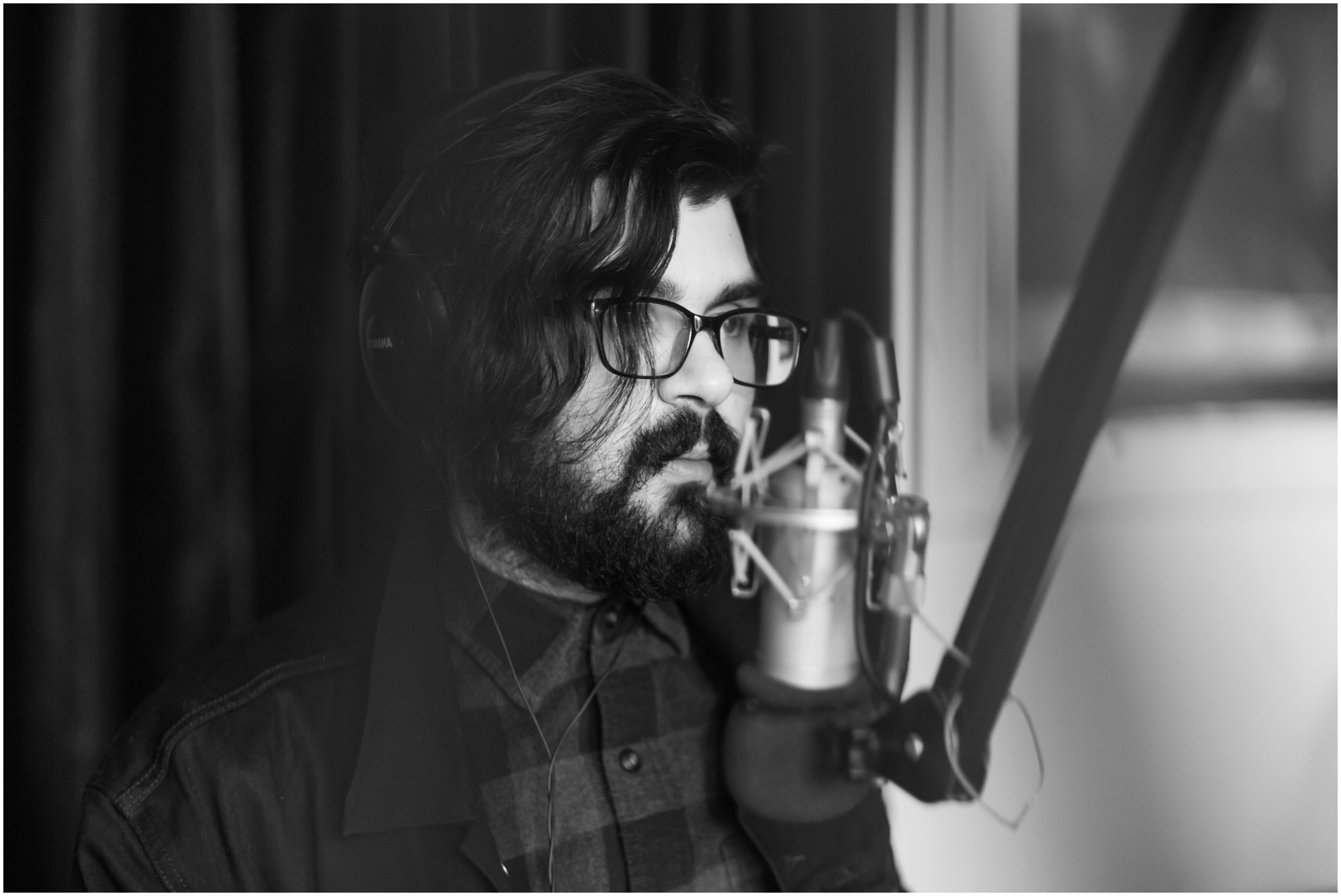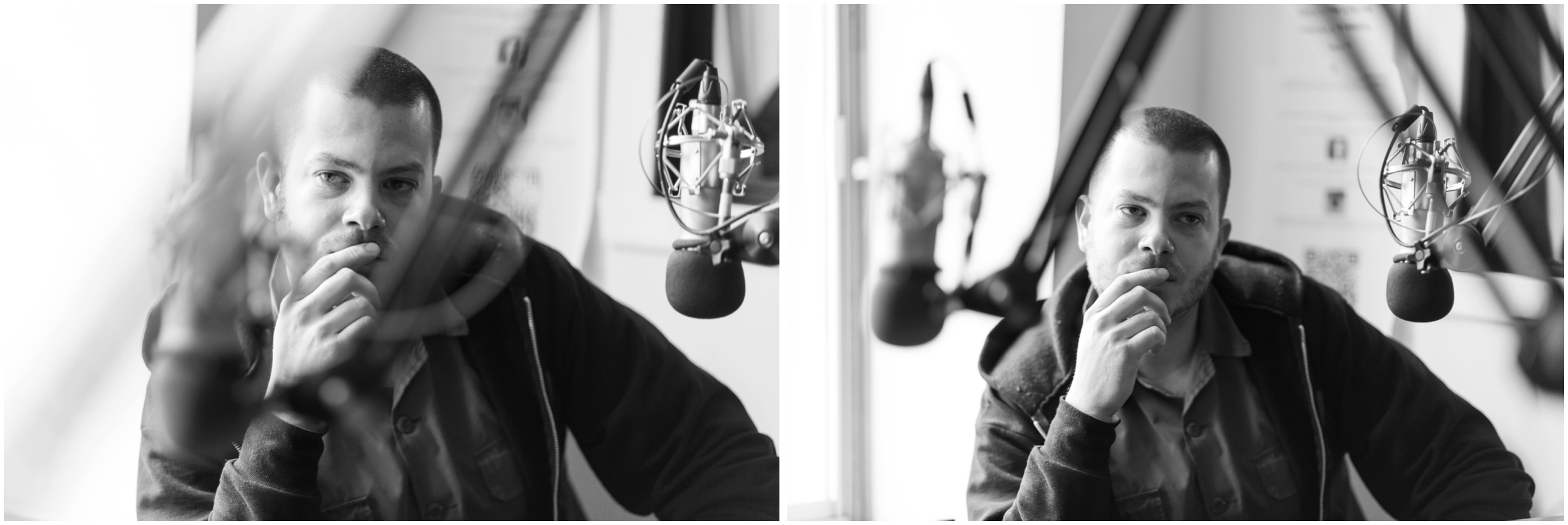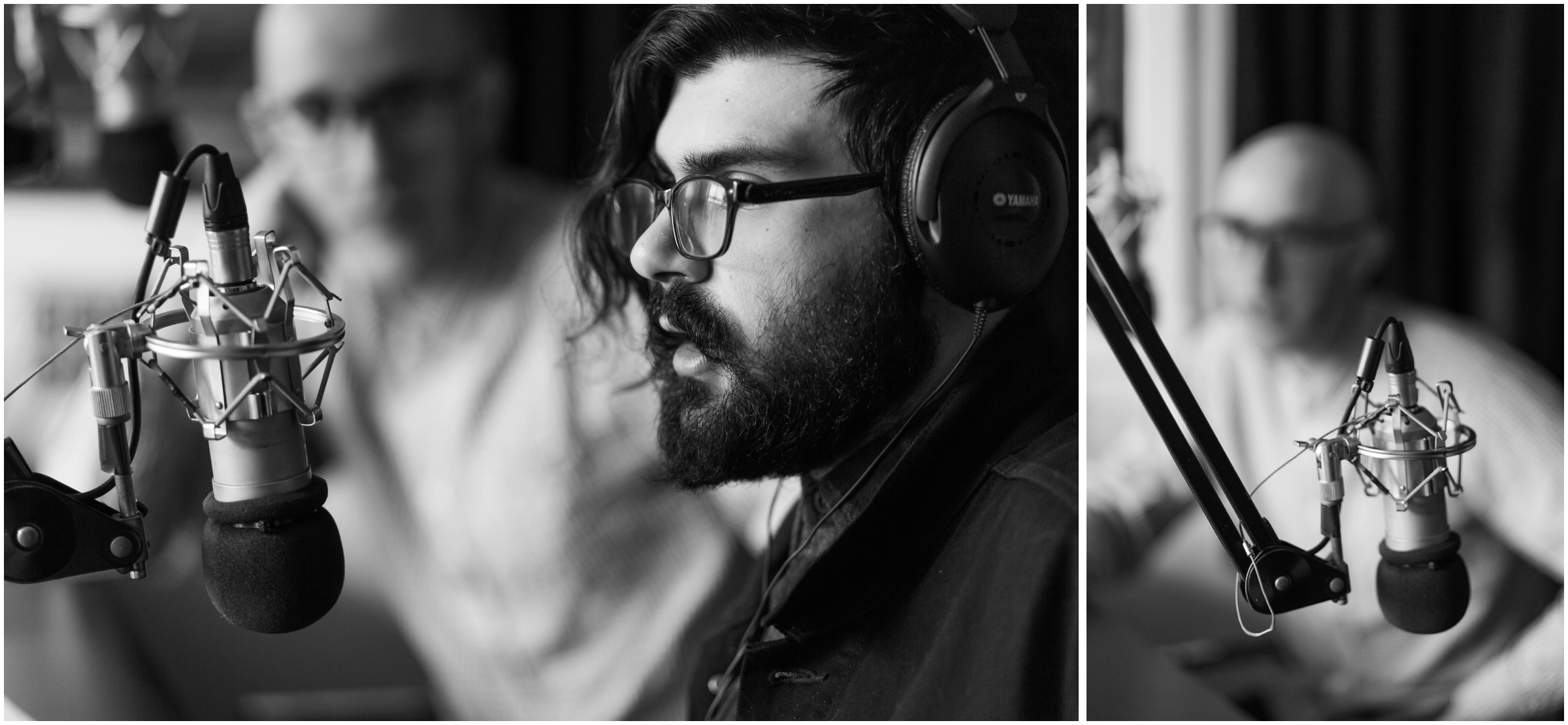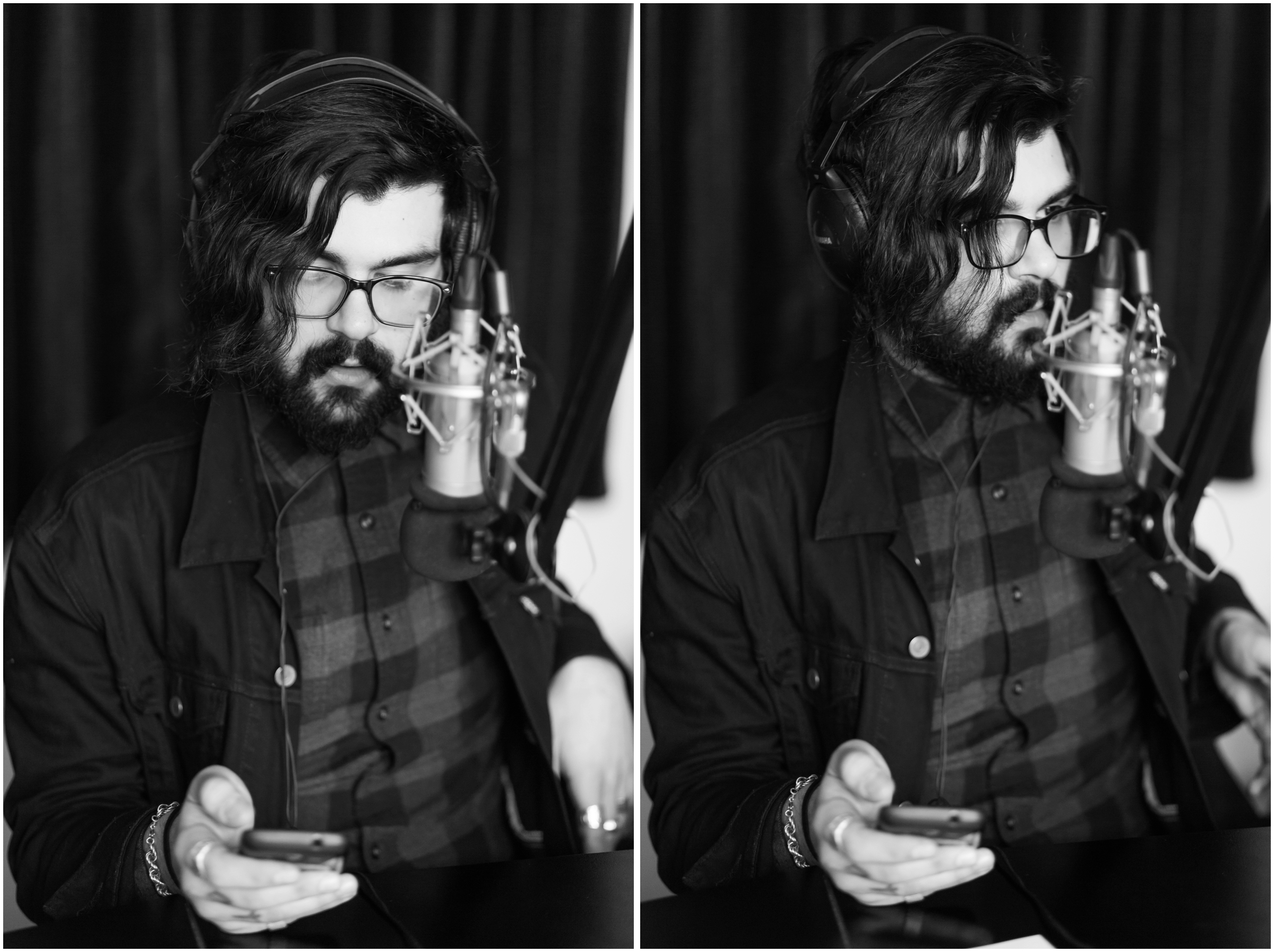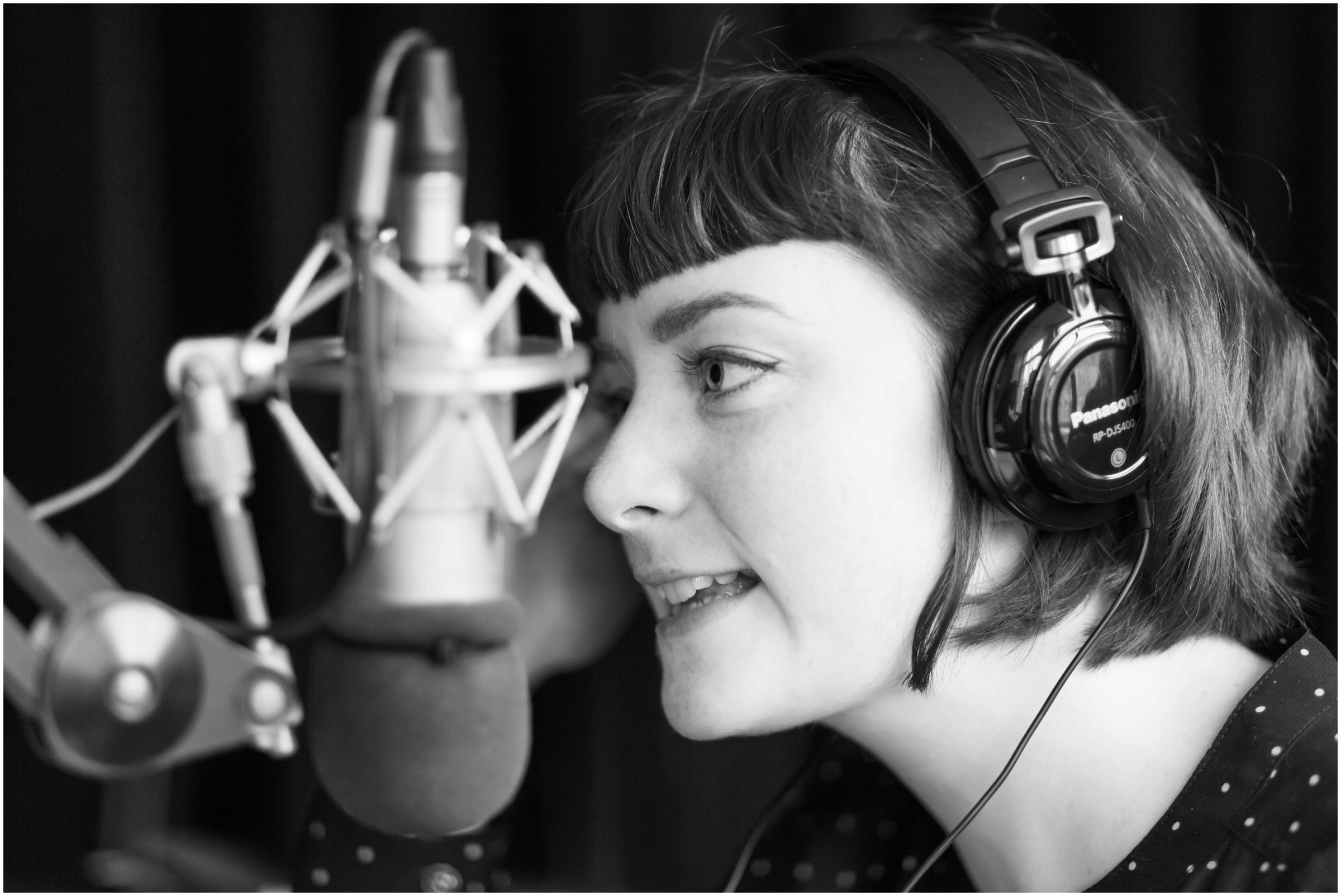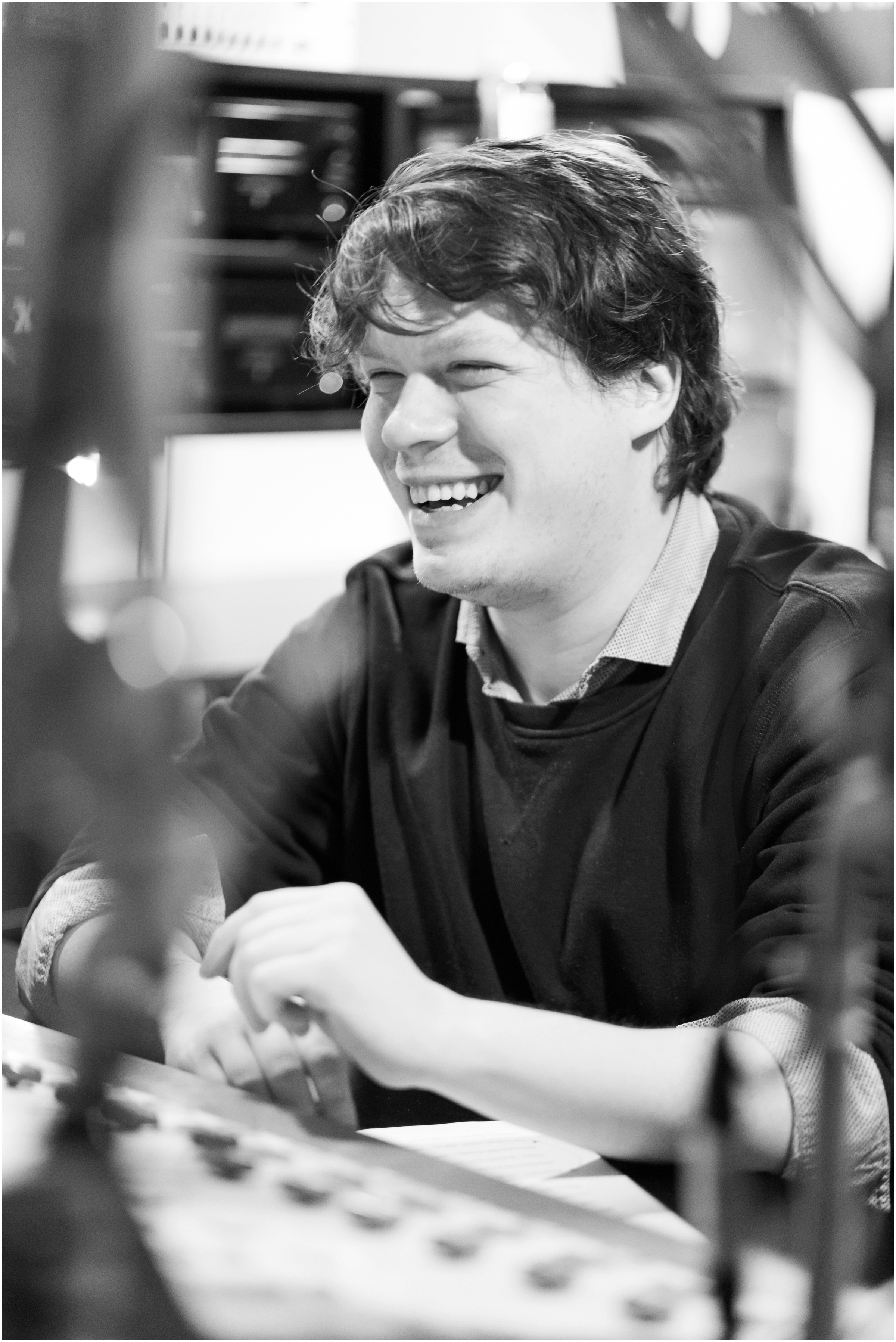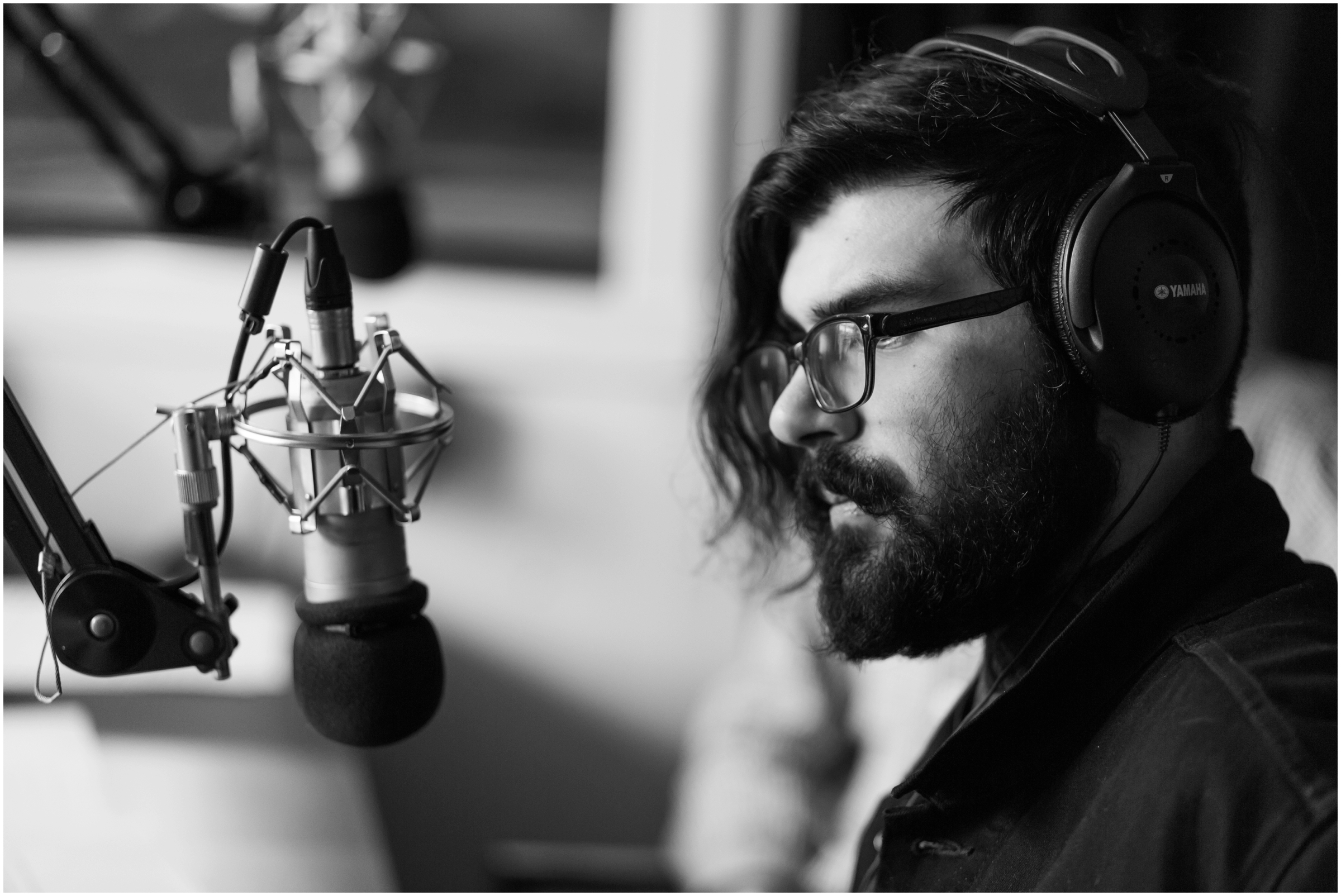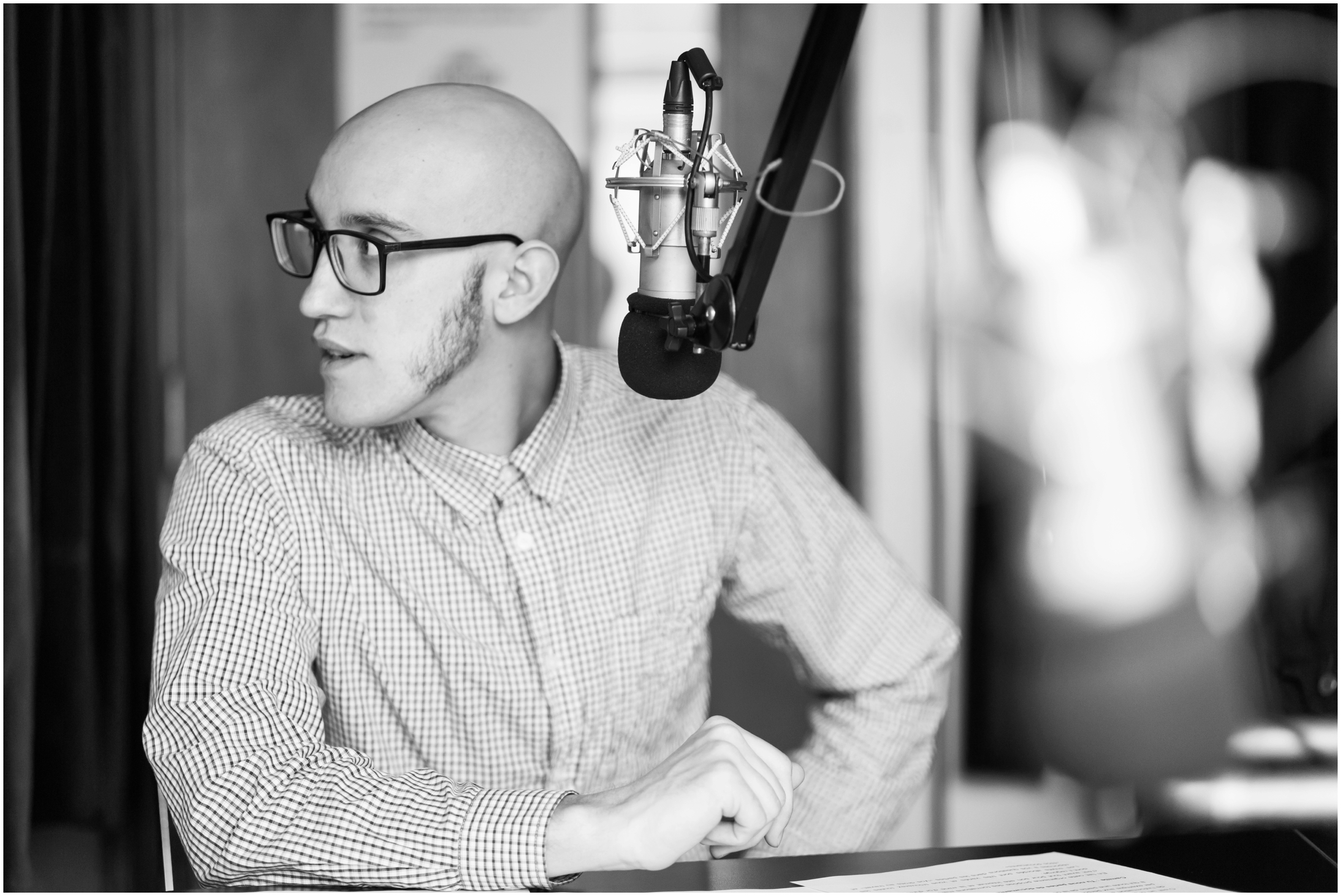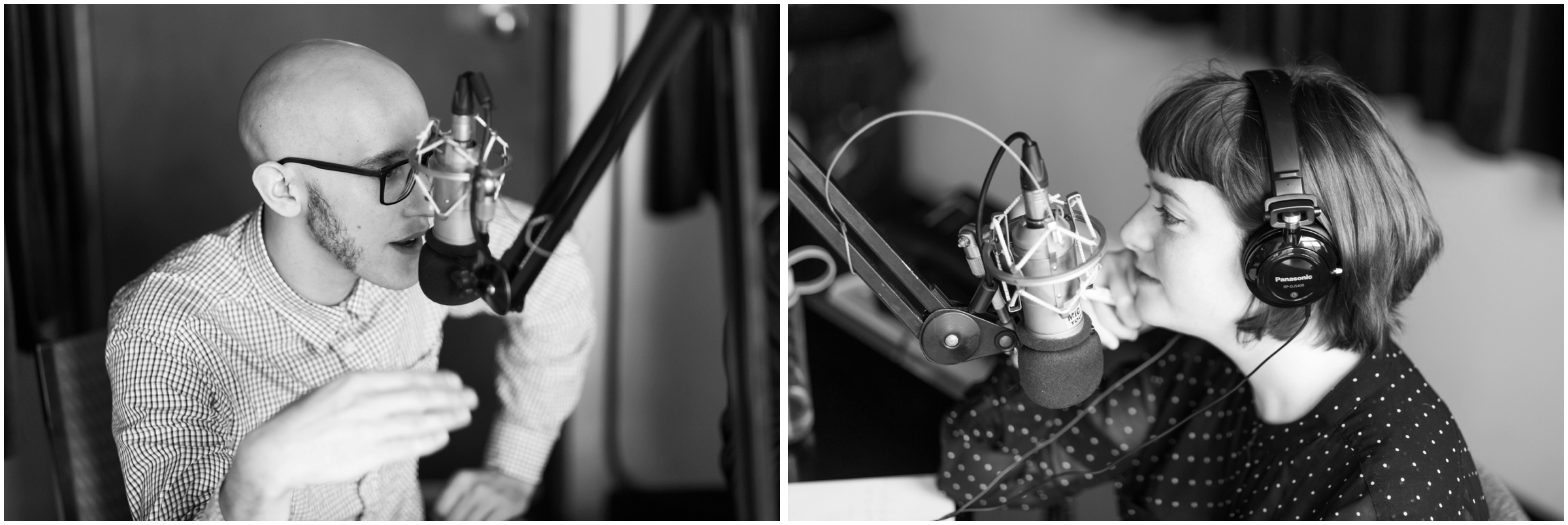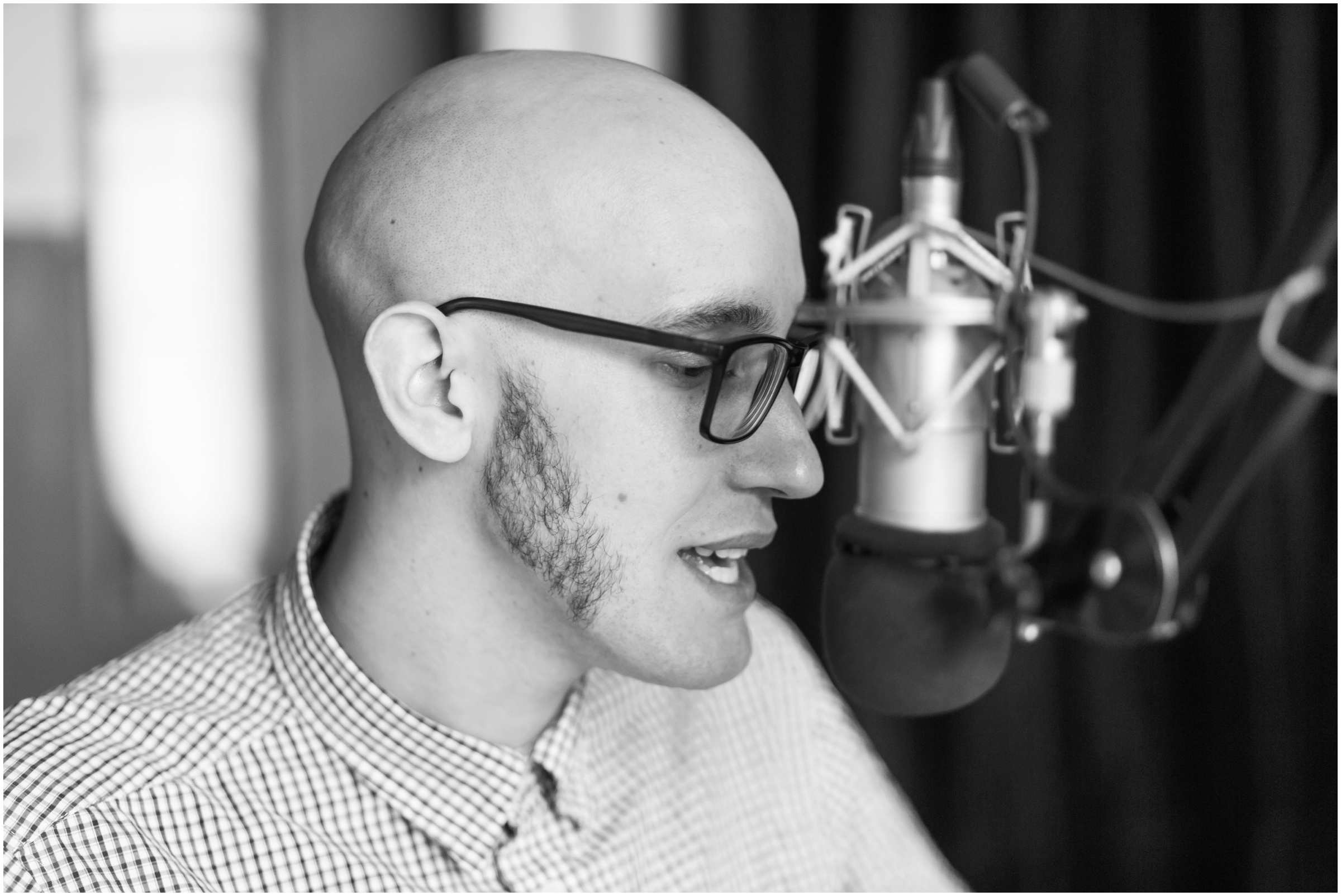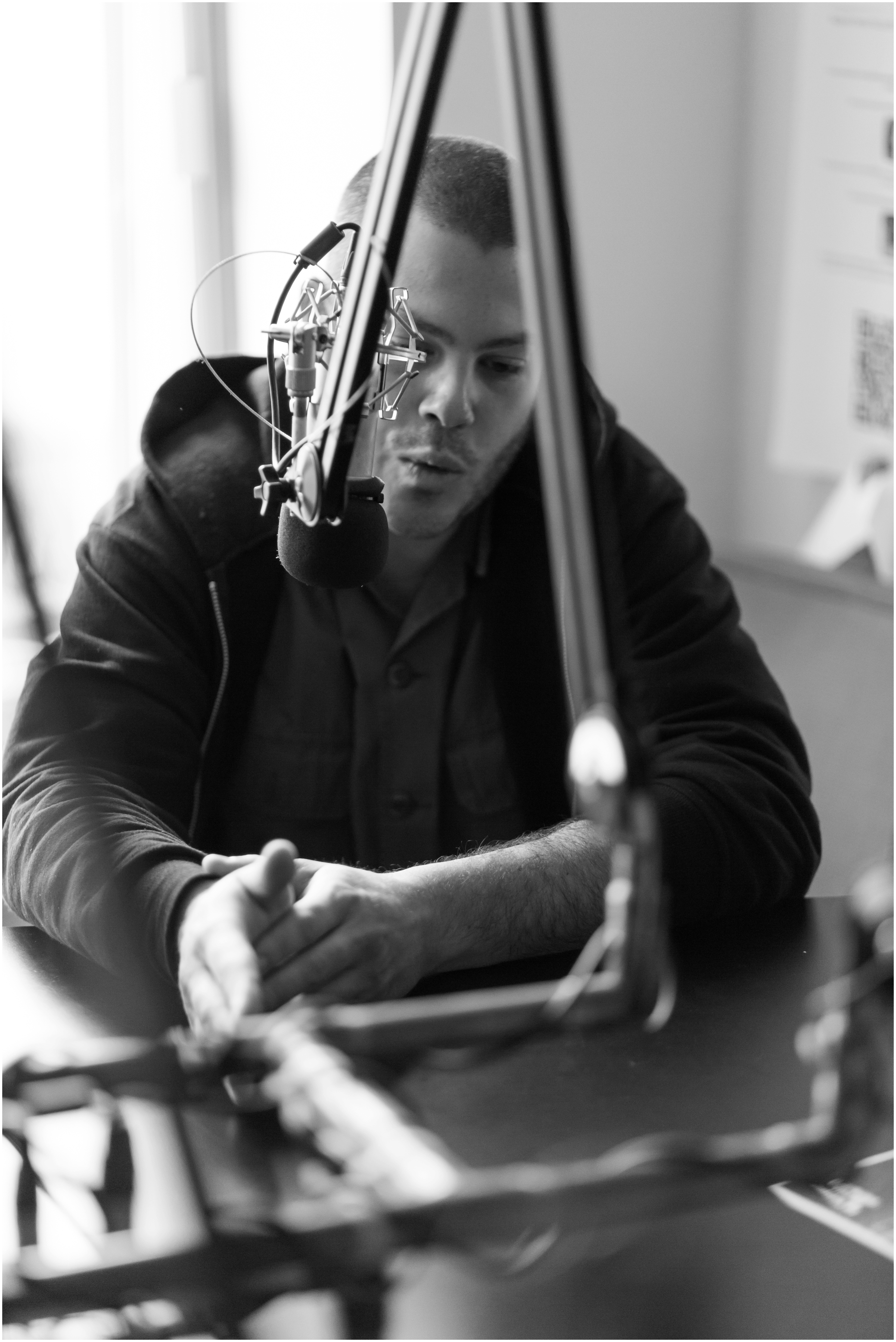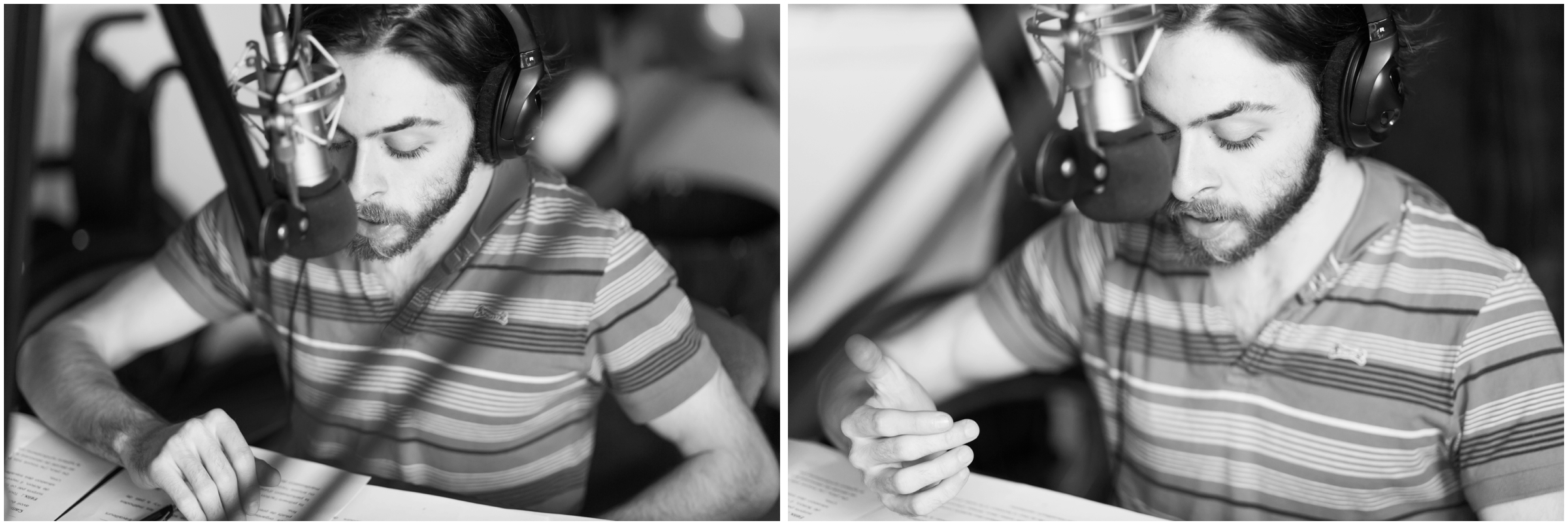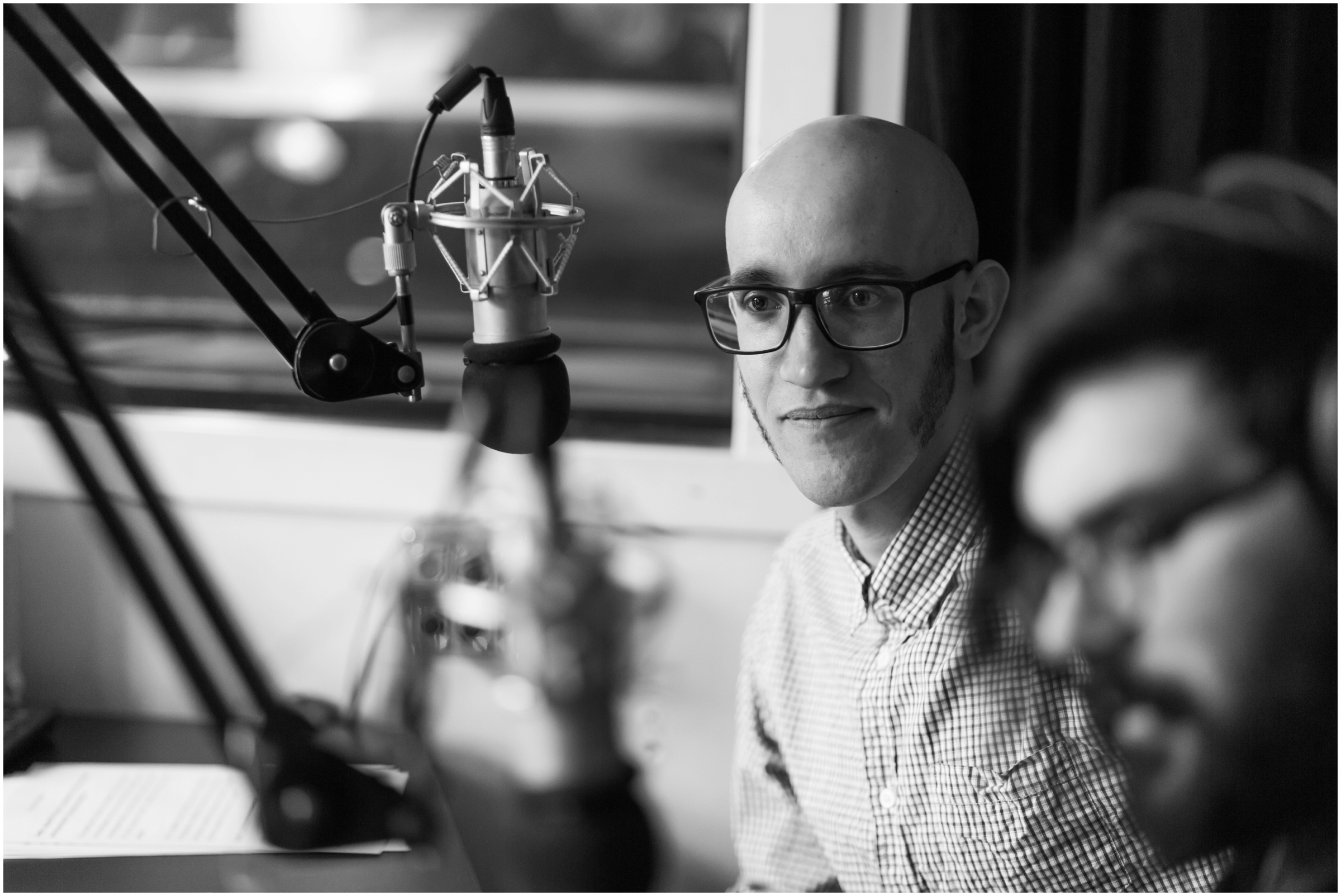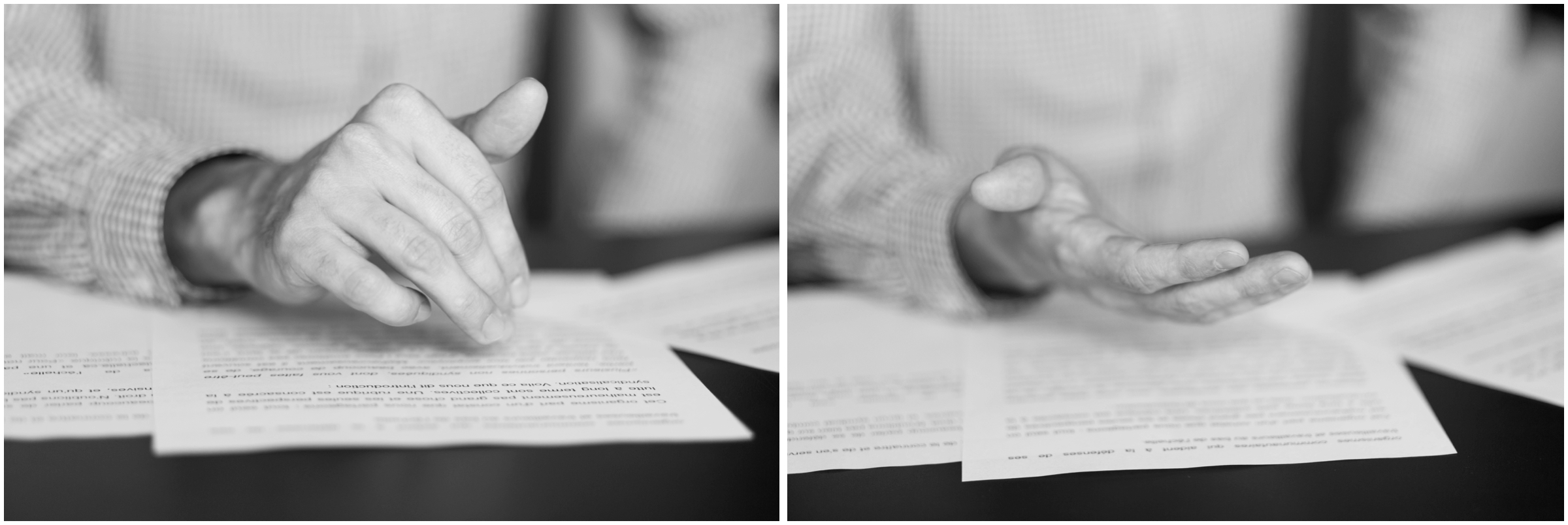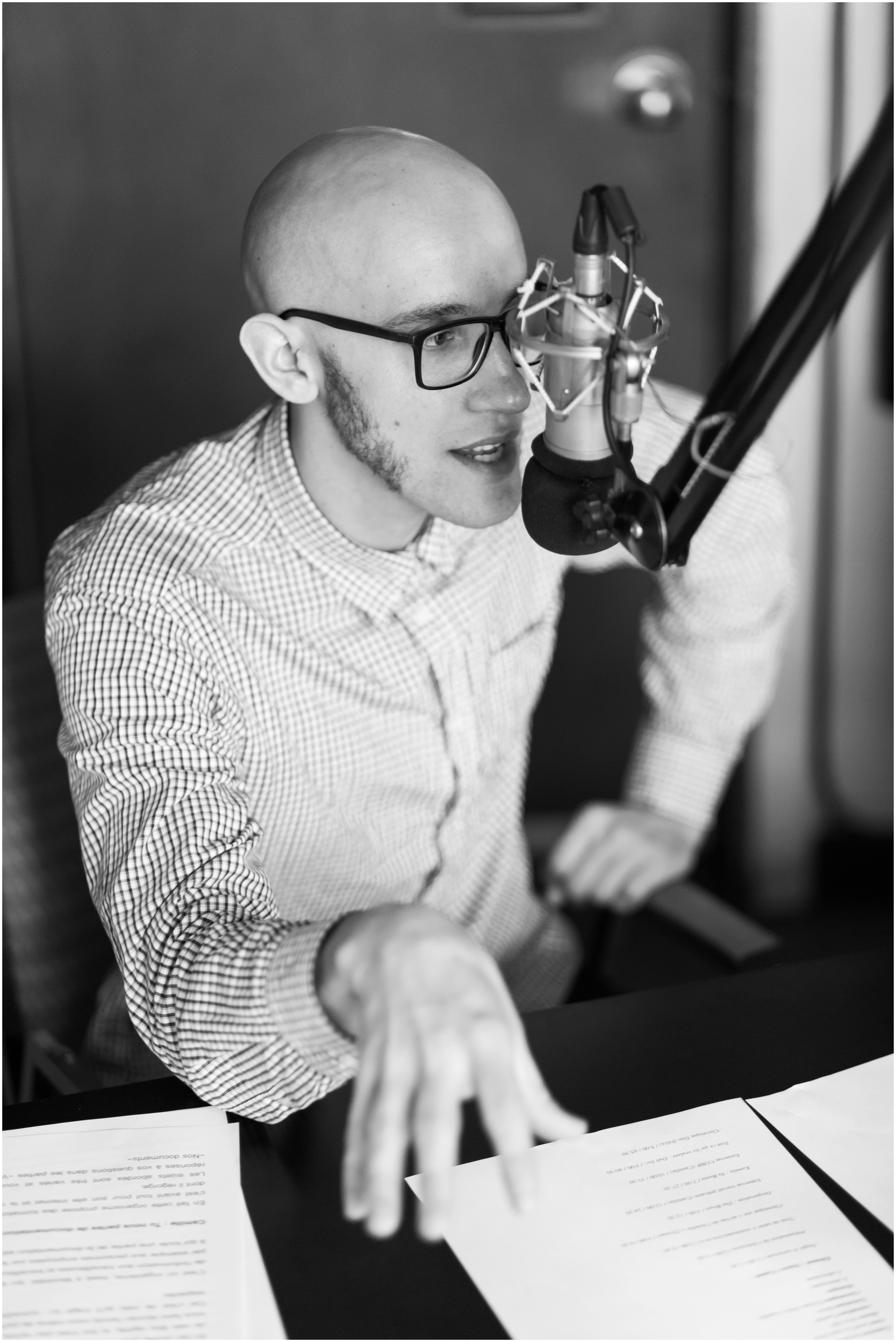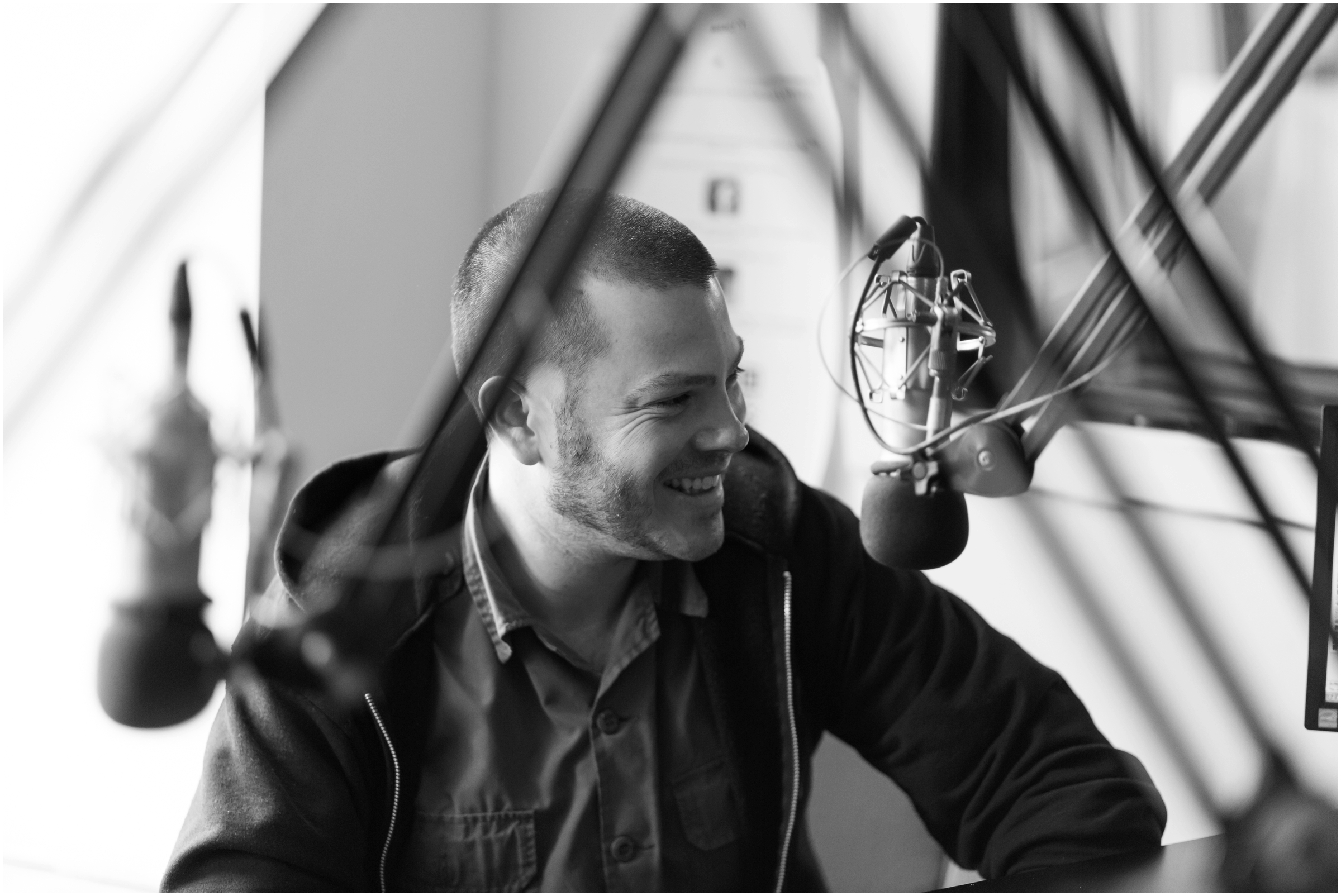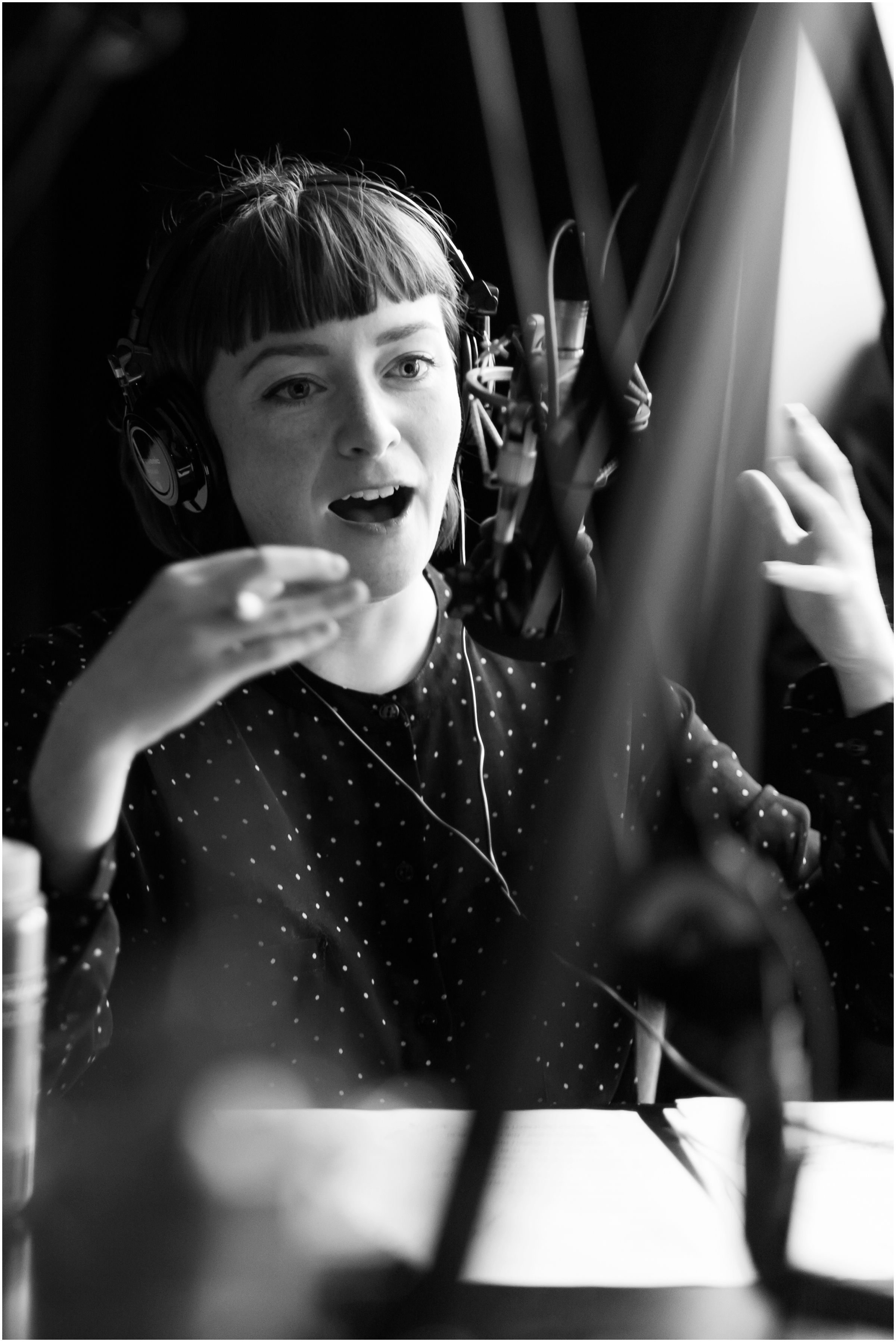There’s a stillness when you step into a studio before the beginning of a radio show. The equipment is all set up, the microphones hovering around the room like the arms of an octopus. But then an ascending silence fills the room, the clock mutedly moving closer to the top of the hour. And then, by some unspoken cue, the lights on the soundboard flick on, and the team fills every chair in the studio.
Although the focus for a radio program is the auditory content, it’s also important for the audience to make a visual connection with the program’s speakers. The program du jour, Action en Direct (Direct Action), is a radio program produced by the Industrial Workers of the World here in Montreal. I volunteered to photograph them to give them some visual content to supplement their regular radio content.
As is often the case, the recording studio was quite small, with an elephant of a table in the centre. When I first stepped into the room, I was concerned about how I would successfully photograph in such close quarters with audio equipment haphazardly spread around the room, creating a cacophony of visual clutter. I began the hour using my 35mm to capture the widest shots in the room.
A few frames in, I realised that rather than presenting a challenge, the presence of the microphones, stands, and cords provided the perfect opportunity to shoot these environmental portraits with plenty of layers. At the first break in the program, I switched to my 85mm. Now I was able to capture tight portraits, using the layers of equipment to frame the subject. I made use of the microphones, slightly out of focus in the foreground, to give context to the subject. I moved around the room and stood on the table to grab a high angle shot.
Another stereotype of radio studios is dark recording rooms sealed to light tight as a coffin. Luckily for me, there was a huge window along one side of the room. I used this window to light my subjects, paying close attention to the way the light wrapped around their faces from different angles. Naturally, the people closest to the window received the most direct light, but even those hidden further back in the room were well lit.
Aired twice monthly at Radio Centre-Ville, the program discusses a range of topics related to working class life. While the team discussed the 15-5-7 Campaign ($15/hr, 5 weeks vacation, and 7 paid personal days) and reviewed the 2000 film Bread and Roses, I hovered in the background photographing the faces behind those impassioned words. Here you can listen to the March 13. You may hear a few muted clicks in the background of this episode; they were worth it.
Tech Specs
Location: Radio Centre-Ville, Montreal, QC
Date: March 13, 2016
Equipment: Canon 5diii, Canon 35mm, Canon 85mm
This Life by Selena Photography blog post about environmental portraiture was produced by Montreal photographer Selena Phillips-Boyle. Post suggestion and edits by Maxim Baru. Here you can see another behind-the-scenes project photographed by Selena with the Cooperative Agriculture de Proximité Ecologique. Here is another behind-the-scenes project with the movie Mature Young Adults.

